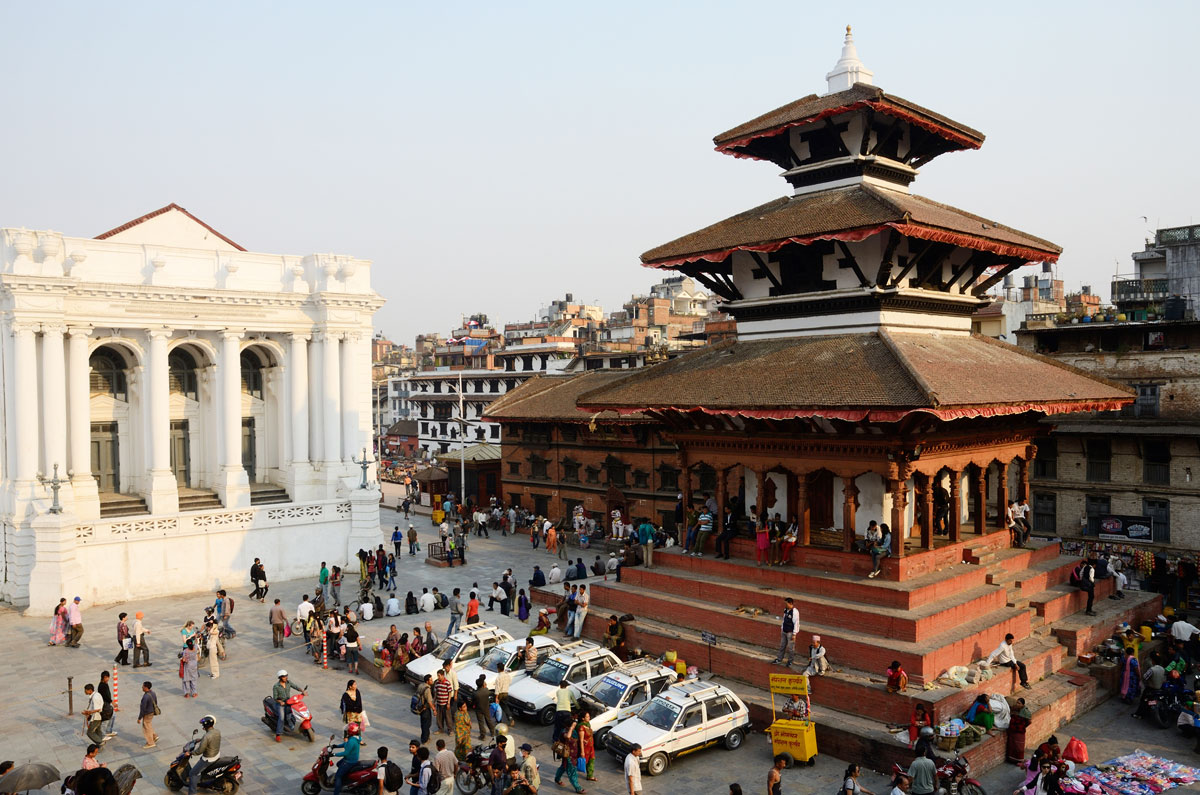NEW CONSTITUTION
File photo of local people resting at Basantapur Durbar Square. Durbar square is a UNESCO heritage and very popular tourist site in Kathmandu, Nepal.
Nepal’s Constituent Assembly overwhelmingly approved a new constitution after seven years of painstaking efforts and deliberations, Sept. 16, splitting the country into seven federal provinces, writes Shirish B. Pradhan.
Constituent Assembly (CA) Chairman Subash Nemwang announced the charter was passed by a 507-25 vote in the 601-seat assembly after the voting. Lawmakers raised their hands in celebration after the announcement was made.
Now, the bill will become Nepal’s new charter once the lawmakers sign and the CA Chairperson authenticates it.
The constitution was pushed through the assembly despite protests by ethnic minority groups. It will split Nepal into seven federal provinces. Some ethnic groups have opposed the makeup, borders and size of the provinces.
When put to split voting after the endorsement of individual articles and schedules, the entire Revised Bill garnered support from 507 out of 532 lawmakers who were present in the parliament.
The lawmakers from Nepali Congress, CPN-UML and UCPN- Maoist supported the draft constitution.
The voting was boycotted by smaller opposition parties.
As many as 25 lawmakers belonging to pro-Hindu and pro-monarchist Rastriya Prajatantra Party Nepal cast their vote against the bill. Most of the Madhes-based parties, whose combined strength is 60, boycotted the voting process.
After announcing the result of the voting, Nembang asked the lawmakers to sign on the dossiers by Sept. 18.
The government is planning to declare public holiday on September 20 and 21 to celebrate the occasion. Major ruling parties have directed their cadres and supporters to light colorful lights on September 20 to celebrate the occasion.
In the CA meeting scheduled for September 20, President Ram Baran Yadav will announce the promulgation of new constitution through the sovereign body elected by the people.
Nepal was declared a secular state in 2006 after the end of decade-long civil war between Maoist insurgents and the state that claimed nearly 16,000 lives.
A CA was elected in 2008 after the abolishment of the Himalayan country’s 240-year-old Hindu monarchy, but it could not finish its task despite four extensions.
Subsequently, a second CA was elected in 2013 which deliberated the draft constitution for over two years.
The drafting process was accelerated after the deadly-quake of April 12 that claimed more than 9,000 lives in the country of 28 million people.


